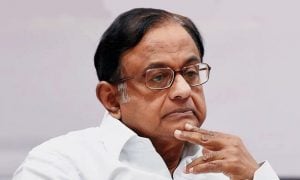Direct tax collections fall 5.3% to Rs 9.56 lakh crore
Summary
According to government sources privy to the developments told CNBC-TV18, that direct tax collections during this fiscal, as of today, have slipped to 5.3 percent.
As the financial year comes to a close and fiscal pressures mount on the government, the direct tax collections continue to fall despite receipt of the last tranche of advance tax which traditionally gives a leg up to the tax collections.
According to government sources privy to the developments told CNBC-TV18, that direct tax collections during this fiscal, as of today, have slipped to 5.3 percent.
“Direct tax collections as of today stand at Rs 9.56 lakh crore from April 2019 till date as against Rs 10.09 lakh crore during the same period last year. Of this Rs 9.56 lakh crore, the government has received corporate tax of Rs 5.16 lakh crore and income tax of Rs 4.27 lakh crore,” government sources requesting anonymity told CNBC-TV18.
It was in the Union Budget 2020 when the government had revised the tax collections target downwards to Rs 11.70 lakh crore for the current fiscal from Rs 13.35 lakh crore cited earlier. The government had rationalised the tax collections targets noting the revenue forgone on account of the reduced corporate tax rate of Rs 1.45 lakh crore.
Even as the government was calling Rs 11.70 lakh crore a modest target to be achieved, government sources said the targets now look far from being achievable even if the finance ministry includes the cushion of bulk tax receipts coming from the Vivad Se Vishwas Scheme.
In the Budget, union finance minister Nirmala Sitharaman had announced the introduction of the Vivad Se Vishwas Scheme, which would give relief to taxpayers who would want to end their legacy tax disputes provided they pay up as per the scheme contours.
Though the Vivad Se Vishwas scheme has been passed by both the Houses of the Parliament, the scheme is yet to be notified. Only after notification, the scheme will be open for taxpayers to take benefit and also help government shore up its coffers.
Meanwhile, government sources added that the “current decline in tax collections is due to poor economic activity, businesses have reported less advance tax after adjusting their earlier liabilities.”
On a region-wise break -up of the tax collections, government sources said Kanpur remained the worst-performing jurisdiction with “tax collections slipped by 19 percent to Rs 22,242 crore from April 2019 till date as against Rs 27,379 crore during the same period last year.
On the contrary, Nagpur has performed the best. “Tax collections in Nagpur region grew by 33 percent to Rs 5,131 crore from April 2019 till date as against Rs 3,853 crore during the same period last year,” government sources added.
The traditional top garner Mumbai has also witnessed a decline in collections. “Collections slipped by 6.7 percent in Mumbai region to Rs 2.92 lakh crore from April 2019 till date as against Rs 3.13 lakh crore during the same period last year,” sources quoted earlier said.
Similarly, Delhi saw a decline of 8.7 percent to Rs 1.39 crore during April 2019 till date as against Rs 1.53 during the same period last year. Bengaluru saw a decline in collections of 5.6 percent to Rs 1.04 lakh crore from April 2019 till date this fiscal, as against Rs 1.10 lakh crore during the same period last year.
However, Hyderabad saw a little growth of just about one percent, with collections coming to RS 53,680 crore from April 2019 till date as against Rs 53,075 crore during the same period last year,” sources privy to the developments told CNBC-TV18.
What now remains to be seen is how soon the government notified the Vivad Se Vishwas Scheme and how many taxpayers take the benefit of ending their legacy disputes and cough up to the tax collections helping the North Block to meet the daunting target of Rs 11.70 lakh crore.

Elon Musk forms several ‘X Holdings’ companies to fund potential Twitter buyout
3 Mins Read
Thursday’s filing dispelled some doubts, though Musk still has work to do. He and his advisers will spend the coming days vetting potential investors for the equity portion of his offer, according to people familiar with the matter









 Listen to the Article
Listen to the Article  Daily Newsletter
Daily Newsletter













